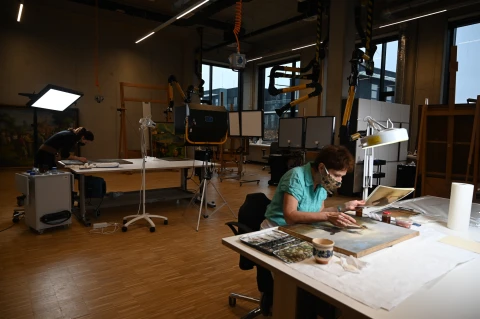
Life Has Started in the World-class Museum Service Facility
In May 2019 Prime Minister Viktor Orbán opened the National Conservation and Storage Centre, a world-class museum service facility constructed as part of the Liget Budapest Project. The hundreds of thousands of artworks and artefacts from the Museum of Fine Arts, the Hungarian National Gallery and the Museum of Ethnography are continuously being moved into the building in Szabolcs Street, which will be home to the greater part of these museums’ collections; moreover, their restoration and conservation will also be carried out here.
Central European in the institution’s name refers to the research base that is planned to be built with this significant collection at its core, making it possible to organise important international research projects in the future with Budapest as their centre. In cooperation with universities, KEMKI wishes to play a part in Hungarian art history education by supplementing theoretical knowledge with hands-on experience since the institute will be an ideal place for aspiring art historians to learn how to look at paintings with the eyes of a professional, how to examine a signature or how infrared spectroscopy is conducted and what it is used for. They will be able to learn about all those things that cannot be observed and understood at university but only in a museum and, above all, in an environment where artworks are directly accessible.